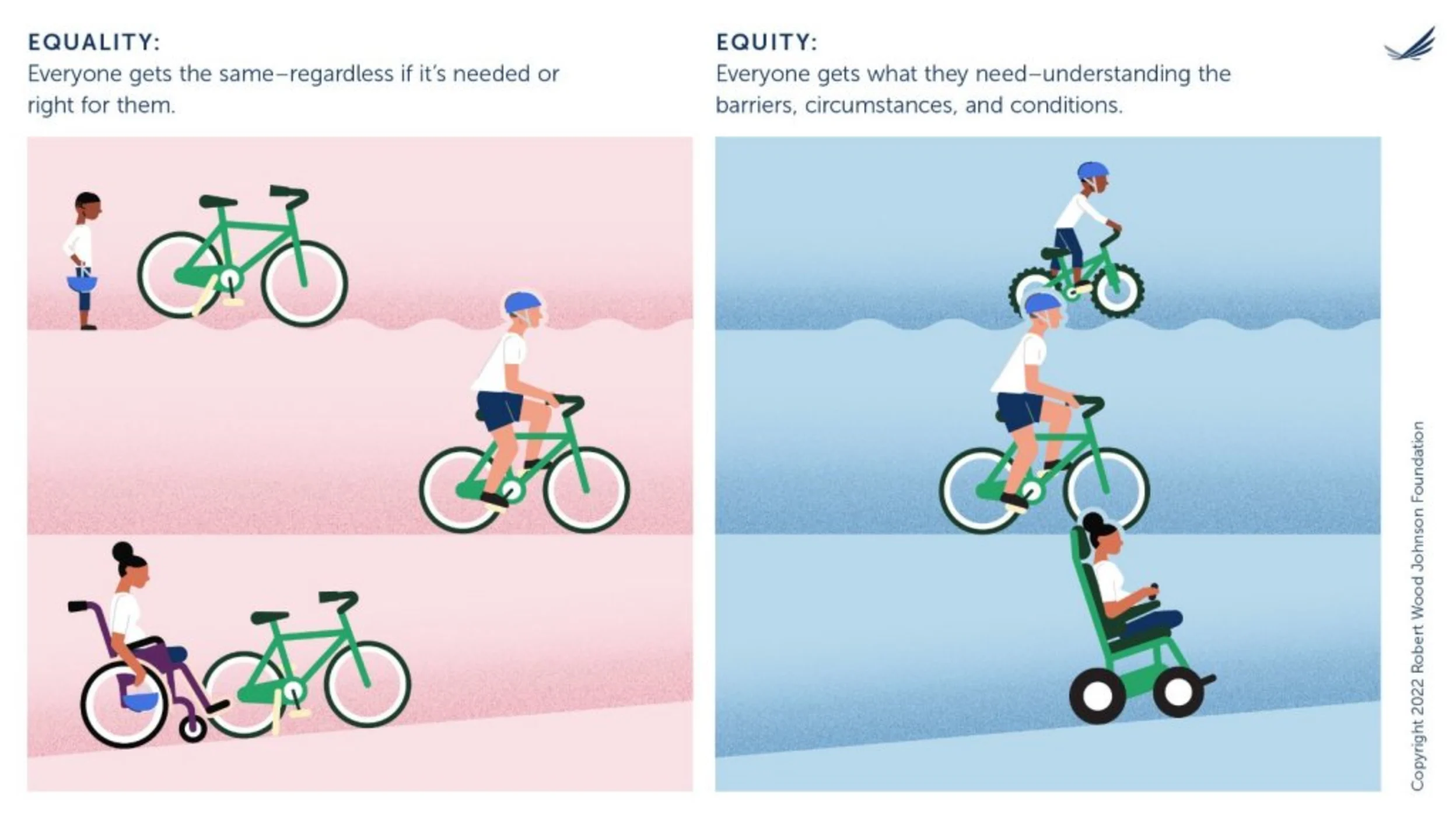What do we mean by Diversity, Equity and Inclusion?
Diversity is the presence of differences that include gender, gender identity, sexual orientation, race, ethnicity, ability, socioeconomic status, age, religion, nationality or language.
Inclusion ensures all people feel a sense of belonging — that they are welcome and important. Inclusion means celebrating, centering and amplifying the perspectives, voices, values and needs of people who experience systemic barriers, mistreatment or disadvantages based on their identities. Inclusive organizations strive to be welcoming to all by removing systemic barriers to participation.
Equity versus Equality
While both share the ultimate goal to achieve fairness, the approach taken can lead to dramatically different outcomes for systemically excluded people. Equality strives to achieve fairness by treating everyone the same regardless of need and circumstances, while equity achieves this through treating people differently depending on their needs and circumstances so all can enjoy the same rights, opportunities and benefits. Tackling equity issues requires an understanding of the root causes of outcome disparities within our society, our organizations and institutions.
The graphics below are often used to help illustrate these topics and initiate discussions. For example, you have probably seen this graphic with the crates. While widely used, it also raises many questions and there have been numerous critiques and adaptations — including people of different races, gender and ability.

Most critiques of this graphic take issue with the impression it gives that the challenge is inherent in a biological aspect of the person — if the kid on the right were just taller, he wouldn’t need two boxes — rather than a product of circumstances beyond an individual's control. Others question why the fence is there in the first place and ask why exclusion is necessary.

The bicycle graphic above also illustrates equality versus equity, specifically in accessibility. Each person gets the type of bike they need to participate. This is an example of how equity can create inclusivity for everyone.
Justice, meaning impartiality and fairness within the procedures, processes and distribution of resources, including power, is achieved when the root causes of inequities have been identified and removed.
Neither graphic takes the socioeconomic disparities of the groups into account, specifically, how those disparities impact an individual’s ability to participate. For example, if the people in the first graphic could afford to buy tickets to the ballgame, they wouldn’t need to stand on crates to look over the fence. In the second graphic, there is an underlying assumption that everyone can afford to buy the type of bicycle they need to fully participate. In both cases, the economic reality is much different and severely limits the options and opportunities available to each individual.
You must identify and remove the root causes of inequities to achieve justice.
Although economic access is often left out of discussions of diversity, equity, inclusion and justice, it should instead be identified as a root cause of many inequities. You must identify and remove the root causes of inequities to achieve justice.